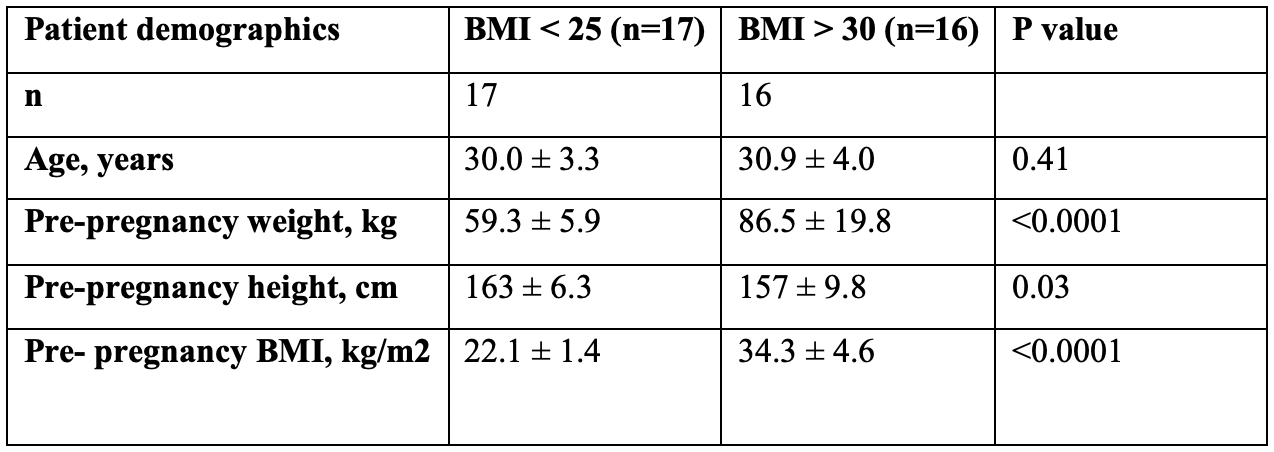Neonatal Fetal Nutrition & Metabolism 2
Session: Neonatal Fetal Nutrition & Metabolism 2
620 - Influence of Maternal Obesity and Nutrition on Human Milk Hyaluronic Acid: A Study of Temporal and Dietary Effects
Saturday, April 26, 2025
2:30pm - 4:45pm HST
Publication Number: 620.5320
Christopher M. Hoover, University of Oklahoma College of Medicine, Moore, OK, United States; Karni S. Moshal, University of Oklahoma College of Medicine, Oklahoma City, OK, United States; Jeffrey Eckert, University of Oklahoma College of Medicine, Oklahoma City, OK, United States; Adam Wilson, Oklahoma Childrens Hospital at OU Health, Oklahoma City, OK, United States; Kathryn Burge, University of Oklahoma College of Medicine, Oklahoma City, OK, United States; David Fields, University of Oklahoma College of Medicine, Oklahoma City, OK, United States; Hala Chaaban, Oklahoma University health sciences, Okl, OK, United States

Karni Singh Moshal, Ph. D. (he/him/his)
Staff Scientist
University of Oklahoma College of Medicine
Oklahoma City, Oklahoma, United States
Presenting Author(s)
Background: Maternal obesity is associated with alterations in human milk bioactives, which may influence infant health, particularly immune and gut development. Our group has a long-standing interest in hyaluronic acid (HA), a glycosaminoglycan with immunomodulatory and gut-protective properties. HA supports infant microbiome development and protects against enteric infections, intestinal inflammation, and necrotizing enterocolitis. However, the effects of maternal BMI and dietary intake on HA concentrations in human milk remain unclear. This study aims to explore the stability of HA in relation to maternal BMI and short-term dietary influences.
Objective: This study aimed to 1) characterize the stability of HA concentrations in human milk from mothers with normal ( < 25) vs obese (>30) prenatal BMI over a one-week period and 2) examine the acute effects of a high-fat meal (Jimmy Dean Breakfast Sausage Bowl®) with a sugar-sweetened beverage (SSB, 20 oz Coca Cola®) on HA levels over the course of 6 hours in these two BMI groups.
Design/Methods: Exclusively breastfeeding mothers were enrolled at 6 weeks postpartum. For Aim 1, mothers with BMI < 25 (n = 7) and BMI > 30 (n = 4) collected milk samples daily for 7 days. For Aim 2, mothers with BMI < 25 (n = 17) and BMI > 30 (n = 16) provided milk samples every hour for 6 hours after consuming a high-fat meal and sugar-sweetened beverage. HA levels were measured by ELISA, and data were analyzed using repeated-measures ANOVA.
Results: Demographic characteristics between groups were similar in age but differed significantly in pre-pregnancy BMI, weight, and height (Table 1). Over the 7-day period, HA concentrations remained stable in both BMI groups, with consistently higher levels in the BMI >30 group (Figure 1A). Although the overall difference in HA levels between groups did not reach statistical significance on most days, HA levels were significantly higher on Day 5 in the obese group compared to the normal BMI group (140.0 ± 19.28 ng/mL vs. 94.13 ± 11.41 ng/mL, p = 0.0483). During the 6-hour postprandial assessment, no significant differences in HA concentrations were observed within or between the groups, indicating that short-term dietary intake did not influence HA levels (Figure 1B).
Conclusion(s): Our findings indicate that mothers with BMI >30 have higher levels of HA in their milk. While short-term dietary intake does not appear to influence HA levels, further studies are needed to investigate the long-term effects of maternal BMI on HA concentrations and related infant outcomes.
Patient Demographics

Figure 1: Hyaluronic Acid (HA) Concentrations in Human Milk by Maternal BMI Group
.png) (A) Mean HA concentrations over a 7-day period in mothers with normal BMI ( <25) and obese BMI (>30). (B) HA concentrations during a 6-hour postprandial assessment following a high-fat meal. Error bars represent standard error of mean (SEM). * p < 0.05.
(A) Mean HA concentrations over a 7-day period in mothers with normal BMI ( <25) and obese BMI (>30). (B) HA concentrations during a 6-hour postprandial assessment following a high-fat meal. Error bars represent standard error of mean (SEM). * p < 0.05.
